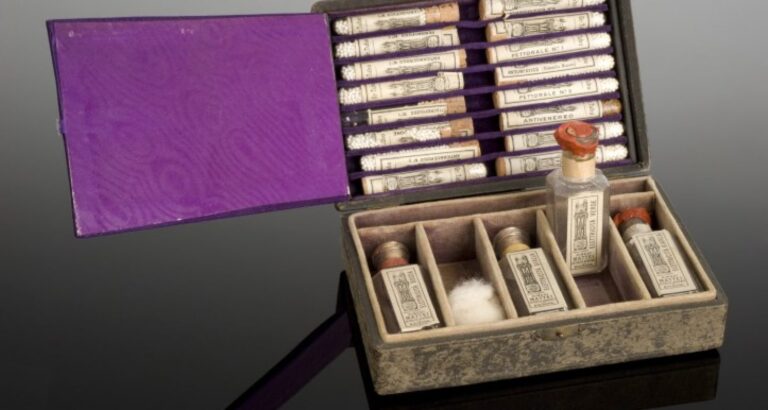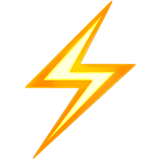
Homoeo History
Homoeopathic History:
One of the basic principles of homeopathy is that symptoms are the manifestations of the body seeking to restore its natural healthy balance. Rather than be suppressed, the symptoms should be viewed as indications that the body’s healing process has started. They tell us how treatment should proceed.
Two hundred years ago Dr. Samuel Hahnemann discovered that a substance, which causes the symptoms of an illness, when given in a small dose to a sick person, acts as a trigger to intensify the healing processes that the body’s immune system has already begun.
Homeopathy comes from the Greek words, homoios, meaning like or similar and, pathos, meaning suffering. The word homeopathy was first used in 1796 by Dr. Hahnemann. He was expounding the hypothesis that supposes that to cure a disease by opposite means — the common practice of his time (blood-letting, application of leeches, emetics, and purgatives) — was inferior to healing according to the use of similar means: “Let likes be treated with likes,” he proposed.
Hahnemann followed up his theory with painstaking experiments to find remedies. He was engaged in a series of ‘provings,’ as he called it — tests that verified the action of a drug upon the healthy body. He recorded the unusual sensations and symptoms produced as well as any health change experienced while taking the drug. Hahnemannís method has not changed since then, although since the second half of the twentieth century additional placebo control studies are customary.
In order to test a homeopathic remedy groups of healthy volunteers, the ‘provers,’ were given different dilutions (potencies) of a substance over a set period of time. Hahnemann tried many remedies on himself. During the proving period, all changes of signs and developments of the symptoms were recorded on a daily basis. These progress notes of each proving indicate any signs and symptoms that developed during the process such as any changes in temperature, intellectual acuity, alertness, body irritation, thermalgesia, or any other alterations. This information was organized in order of importance. Hahnemann was a gifted chemist, a medical doctor and a pioneer who spoke out against the standard medical practices of his time:
Through my inquiry into the art of healing I found the road to truth upon which I have to tread alone, a road far removed from the common highway of medical routine. The further I advanced from truth to truth, the further did my conclusion move from the traditional approach, built only on opinion, although I allowed no single one of my conclusions to stand unless fully confirmed by experiment…”
DEVELOPMENT OF HOMEOPATHY
These words were written in the preface of Hahnemannís seminal work, Organon of Rational Healing which was first published in German in 1810, amended subsequently in six more editions, known under the new title as Organon of the Healing Art. Although Hahnemannís remedies were successful in treating some of the most virulent diseases of his time, cholera, malaria, typhus and scarlet fever, and he was honored during his career, he and his ever-growing group of adherents were also frequently harassed. Hahnemann was ahead of his time in many areas. His advocacy of basic sterilization techniques during the time of the cholera epidemic in 1831 indicates his knowledge of bacteria and the means by which they spread, thus preceding Pasteur and Lister by thirty years. Sixty-seven years before Koch, Hahnemann described ìthe infinitely small, invisible organisms murderously hostile to human lifeî as the vector that caused the cholera epidemic.
Fifty-five years after Hahnemann was buried in 1843, at age 89, in relative obscurity in Montmartre, his body was exhumed and laid to rest next to other geniuses in Père Lachaise cemetery. Later, a monument was erected to honor him.
Homeopathic training consists of studying the subtle distinction between remedies and the diagnostic procedures distinguish one patient from another. A typical initial session lasts between one and one and a half hours.
The principle of homeopathy is somewhat similar to that of immunization which Dr. Edward Jenner had used, also in 1776, to inoculate against small pox. But whereas Jenner used cow pox for his vaccination, Hahnemann decided that using such virulent substances was too dangerous. He sought out herbal, mineral and animal substances from which he made a “mother tincture,” a concentrated form of the substance in alcohol. He then diluted these tinctures in a systematic way to produce smaller and smaller solutions (potencies). This was followed by “succussions,” vigorous shaking.
The highly diluted solutions went beyond molecular levels. When the medicines are diluted beyond twelve or twenty-four potency, no molecules remain of the original base substance. These highly diluted potencies have been found to act more effectively.
RESEARCH AND FACT ON HOMEOPATHIC REMEDY
There are currently over 3,000 remedies documented to be effective and safe for the treatment of a wide variety of human and animal illnesses. Homeopathic medicines are derived from animals (e.g.: sepia), minerals (e.g. sulphur), pathogenic substances (e.g. hydrophobinum), and healthy tissues (e.g.: thyroid), plants (more than sixty per cent of remedies, e.g.: belladonna), and others (e.g. X-ray).
Homeopathic remedies may be classified according to five different headings:
- The Singular Remedy
- Specific Remedies
- Polycrest Remedies
- Constitutional Remedies
- Combination Remedies
The remedies are available as tiny tablets that are taken under the tongue, as liquid tinctures, granules or ointments. Although the method for manufacturing of remedies have changed since Hahnemannís day, his principles are still utilized today. Reputable companies have produced over-the-counter homeopathic single and composite remedies, such as Nux Vomica, Rhus. Tox., Arsenia, and Calcarea Carbonica. These remedies have been found effective in treating a wide variety of common ailments. These are known as ‘polycrest remedies,” from the Greek word ìpolychrest,î which means ” many uses.” Currently there are sixty-five such remedies. Homeopathic medicines are non-toxic, have no known adverse effects, are safe for adults and children and can be combined with traditional pharmaceutical medicines.
Reputable research laboratories all over the world are engaged in research on homeopathic medicines such as Bryonia alba and its effect on rheumatism, Apis mellifica for edema and inflammatory conditions, Oscillococcinum for flu symptoms, and Arnica for bruises and muscle soreness. There are more than 100 double-blind clinical studies which document the effectiveness of homeopathic medicines. Some of the most exciting basic research (all carried out in vitro or on human beings, not animals) is now demonstrating the biological activity of infinitesimal doses (more than 30x). In 1994, Jennifer Jacobs, M.D. published research on the efficacy of homeopathic medicines for the treatment of diarrhea in children in Pediatrics, The Journal of the American Pediatric Association.
ACUTE AND CHRONIC DISEASE
An important homeopathic principle comes into play in treating acute and chronic problems and in making decisions about which over-the-counter combination is best suited for a personís illness. It is a fact that each person has a unique energy or “vital force”–energy which maintains life in the individual. Homeopathic treatment does not subscribe to a mechanistic model of disease but rather supposes that the unwell person is a unified field of mind and body whose homeostatic balance has been disturbed. The true cause of disease, it is assumed, lies in the patient himself. This is why three people with the same illness, such as pneumonia, may receive three different remedies, depending on their personality, physical and mental characteristics, habits and environment.
Hahnemann carefully classified diseases as either acute or chronic. Acute disease occurs when the symptoms are intense and short-lived. They have a definite beginning and ending. The result can lead either to a recovery or to death.
Homeopathy distinguishes four groups of acute diseases: local, clearly defined, accidental and essential. The last can be of epidemic origin such as influenza, chicken pox, scarlet fever etc or they can be acute general functional syndromes resulting from fear, anger, emotional choices. Then again, they may lie on the border of a chronic disease, such as an attack of asthma. Chronic disease is of a more permanent nature. It is deep-rooted, with no specific starting point, course, or end, for example when a patient says, “I have had these symptoms forever. ” The chronic disease may be a life-long process or may be recurrent in nature.
After many years of observation, Hahnemann defined three clinical reactions which were not autonomous diseases but rather pathognomonic syndromes characterized by functional or lesional manifestations in the patient or his family.. He named such states as “fundamental chronic diseases” and attributed each to a “chronic miasma,” either acute or chronic and invisible to the naked eye. The principal miasmas are: psoric, sycotic, and syphilitic. They are correlated to personality traits, emotional reactions, and symptoms. Homeopathic remedies correspond to these very precise etiologies. Vithoulkasí The Science of Homeopathy is a helpful introduction to miasmatic theory.
THE STATE OF HOMEOPATHY IN THE WORLD
Today Hahnemann’s work has been translated into ten languages. Homeopathy is an accepted part of everyday life in France, Germany, England, and The Netherlands where it is paid for by national health care.
In France the popularity of homeopathy has doubled over the last twelve years. The percentage of patients who have tried homeopathy has risen from six percent in 1982 to thirty-six percent in 1994 according to research conducted by the International Homeopathic Medical Organization. There are eight medical schools in France with post graduate courses leading to specialization in homeopathy. Homeopathy is used by GPs, dentists, and veterinarians. The homeopathic industry in France has grown from a $94 million industry in 1982 to a $300 million industry in 1994, employing 3,200 people. Homeopathy is also practiced in Sweden, Holland, India, South America, Australia and Canada. India has over eighty homeopathic schools.
The United States’ relationship with homeopathy has been more erratic. Homeopathy was introduced here in the early nineteenth century. In 1844 Dr. Constantine Hering and colleagues founded the American Institute of Homeopathy. Three years later, in reaction to this, 250 orthodox allopathic doctors founded the American Medical Association (the AMA). Supported by the burgeoning pharmaceutical industry, they began a systematic campaign to oppose homeopathic practitioners (who were opposed to symptom-suppressing, mass-produced drugs).
Around the turn of the century, there were 15,000 physicians practicing homeopathy and 22 homeopathic medical schools. However, by 1904 the AMA had succeeded in persuading philanthropists to stop supporting homeopathic medical schools. They also managed to have the subject excluded from standard medical curriculum. The development of antibiotics after WWII further focused attention on allopathic drugs and away from homeopathic remedies. The Hahnemann Hospital in Philadelphia, named in honor of homeopathy’s founder, was the last facility to close, in 1938. The history of homeopathy is well documented in Weiner’s The Complete Book of Homeopathy.
At present there is a revival of interest in homeopathy in the U.S. About 500 medical doctors and 1,000 lay practitioners practice it, and several national associations have been formed. There is a growing movement to set up national licensing standards. The International Foundation for Homeopathy, located in Seattle, Washington, provides professional courses, organizes seminars, and publishes a monthly magazine, Resonance. The National Center for Homeopathy in Washington, D.C., is composed of physicians and non-physicians. Like the American Homeopathic Foundation (AHF), in Philadelphia, it seeks to promote homeopathy through publication and education. AHF publishes a monthly newsletter, Homeopathy News & Views and the National Center publishes the quarterly Journa1 of the American Institute of Homeopathy.

 by
by